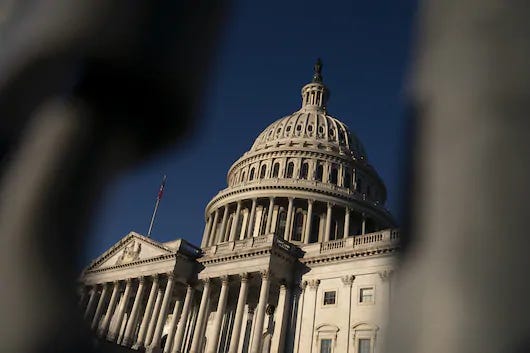Over the weekend we received a weekly progress report for my third grader. At first glance I lost my breath. There were a few boxes marked unsatisfactory and I felt defensive. After spending a few moments digesting the details and context I came to appreciate the new communication tool about his engagement. The progress report gave us great fodder for dinner conversation about shifting expectations with his daily workload. In reality, the workload will be on me to walk him through two more apps each day. You see, my son shows signs of dyslexia and an average on-grade level assignment can be very exhausting for him to complete.
In distance learning I read him the directions for each assignment, help him navigate the language on the digital learning platforms, and make sure he is fed and watered along the way. It feels like a marathon for the both of us. The unsatisfactory marks didn’t faze me in the end because I know my sons’ strengths, sense of self-efficacy, and motivation. Those are the things that teachers are missing this year – the nuances of teacher-student relationship building. As an elementary school teacher, I used to learn the most about my students during transition times to the bathroom, lunchroom, or during recess. We must carve out time for those moments this year because it is not happening through the scheduled screen time and it will have an impact on the inter and intrapersonal skills that are strong predictors of academic outcomes – think engagement, motivation, and belonging. We must hone in on students as individuals this year and use that shift to inform the ways we begin to reimagine our education system for the years to come.
FEDERAL FUNDING AND POLICY
Students, teachers, and families are well into the beginning of this school year and still awaiting federal funding to mitigate the tradeoffs in services. Our communities are vulnerable during such economic recessions because we rely so heavily on state and local funding; now is an opportunity for the federal government to modernize and reify our education funding systems. Education policy leaders and community advocates proposed programs like a new federal funding stream for racial and economic equity, a comprehensive education line item in the relief package, or levers to mitigate the impact of evictions. Either of these are a potential positive step towards rebuilding social trust – a critical measure of the morality and quality between the people and institutions across our country.
Oversimplifying #race and #racism with broad, restrictive social policies is the hallmark of our US education system’s typical interpretation of racial justice. @cmtpitts #edpolicy #educationequity

Public Education Opportunity Grants (Center for American Progress)
Appellate judges let 2020 census continue through October (AP)
Trump economic adviser: Senate Republicans will 'go along with' White House stimulus proposal (The Hill)
Pelosi signals no relief for airlines without bigger COVID-19 deal (Politico)
Advocates plead for housing aid as eviction cliff looms (The Hill)
STATE AND LOCAL FUNDING AND POLICY
Our local education leaders and elected officials are facing rapid, palpable, and dynamic challenges every day. Areas like enrollment, funding, layoffs, furlough days, hazard pay, and maintenance of equity considerations all function at the intersection of social policy and our political context. Tennessee advocates launched an education campaign this week targeted at elected officials and others to advocate for evidence-based education policies and initiatives to improve student outcomes. This type of communication strategy is one lever by which community organizers and advocates can shape the public narrative around education and build broader coalitions to ensure our students and families are always top of mind.
Areas like enrollment, funding, layoffs, furlough days, hazard pay, and maintenance of equity considerations all function at the intersection of social policy and our political context. @cmtpitts #edfi #education #finance
State and Local Education Job Losses Grew in September, as Overall Gains Slowed (Route Fifty)
Designing Effective K-3 Literacy Policies and Navigating the Pandemic (ECS)
Statewide TN initiative launched to combat students’ COVID learning loss (Tennessean)
When it Comes to School Funds, Hold-Harmless Provisions Aren’t “Harmless” (Education Next)
How the 2020 state elections could shape education systems (ECS)
RACIAL EQUITY AND JUSTICE IN EDUCATION
Oversimplifying race and racism with broad, restrictive social policies is the hallmark of our US education system’s interpretation of racial justice. The White House response to the 1619 Project, educational curriculum, and critical race theories is one example of how federal policy can truncate the nuances of social systems and identities that make up the tapestry of our schools and communities. Education researchers and leaders are calling on those at the helm of decision making today to reimagine our schools, create guidance for our families and communities, and co-construct what the future of anti-racism looks like in classrooms from preschool through postsecondary schools.

JPMorgan Chase Commits $30 Billion to Advance Racial Equity (JP Morgan Chase)
SUPPORTING PARENTS AND COMMUNITIES
The impact of the pandemic on parents is varied, but there are common areas of concern and struggle like connectivity and a basic understanding of the new school expectations during COVID. Many districts across the country are door knocking, calling homes, or reaching out to community partners to track down missing students. In addition, district leaders are working with private partners to build systems for digital equity. As these efforts are implemented it is important for schools and districts co-construct solutions with community organizers so local needs and challenges are accounted for.
California voters, including parents, have deep concerns about distance learning (Ed Source)
As Colorado school districts search for students, some worry about tactics (Chalkbeat)
Digital Inclusion Week from National Digital Inclusion Alliance (National Digital Inclusion Alliance)
TEACHING AND LEARNING
We know that students facing poverty and those with lower student achievement disproportionately experienced lower quality remote-instruction programs in spring. However, this is not new information. Most schools in the United States pre-pandemic had not adopted curricula aligned with state standards for mathematics and English language arts, but these school indicators may not be first priority for teachers and leaders. You see educators are missing out on some of the key nuances of teaching and learning that support students’ social and emotional development. While it is critical that we find some ways to put relationships first – maybe SEL focused class meetings – we cannot sacrifice building the just-in-time on ramps to grade level learning this year.
It is critical that we find ways to put relationships first – maybe #SEL focused class meetings – but we cannot sacrifice building academic on ramps to grade level learning this year. @cmtpitts #edpolicy #teacher #student #learning

Why you should care about what curriculum materials your child is using (RAND)
Too little, too late: A hard look at spring 2020 remote learning (AEI)
When should schools reopen fully in-person? Challenges and suggestions for school leaders (Brookings)
Cuomo to close schools in NYC coronavirus hotspots earlier than de Blasio had planned (NY)
Georgia Association of Educators sue state, Paulding County over early reopening plan for schools (GA)
ASSESSMENT AND ACCOUNTABILITY IN DISTANCE LEARNING
The impact of the pandemic on student outcomes will be multidimensional and our measures must capture these facets of learning through descriptive and longitudinal data. In the absence of our typical academic measures it is tempting to fall back on end-of-course measures, but these will not cut it at the systems level. One educational policy expert noted last week that “learning loss models are not meant to inform classroom instruction and diagnostics are not meant to inform policy” – we must be clear about the purpose and uses of our measures this year. CCSSO webinar panelists emphasized the importance of collecting student learning data at multiple levels and with parent input. In the near term we can look at the leading indicators we think will be changing.
In the near term we can look at the leading indicators we think will be changing. @cmtpitts #education #assessment #edpolicy
State ed chiefs ponder coronavirus-era assessment challenges, solutions
Half a million Pa. kids are supposed to be learning to read right now. Are they?
UPCOMING EVENTS
Tuesday, October 13 (4:00 EST) KnowledgeWorks webinar on “Lesson study: Exploring the impact of student-centered learning on mathematics”with High Tech High Graduate School of Education who will share findings from their lesson study research.
Tuesday, October 13 (3:00 EST) The Learning Policy Institute webinar on “How Districts Can Support Meaningful Learning Through Performance Assessments”with three district leaders discussing how they supported the implementation of performance assessments.
--
Dr. Christine M. T. Pitts serves as Manager of Research and Evaluation at Portland Public Schools. As an Oregonian, raised by a multicultural family of educators, she brings a decade of progressive strategic leadership experience, a transformative vision, and analytic skill to crafting state education policy. An educator and researcher by training, she has conducted legislation, governance, and policy analyses on a wide array of education issues using social network analysis and mixed methods research. In addition, Dr. Pitts is a facilitative leader who deeply understands and co-constructs local and national partnerships and convening across stakeholder groups. Dr. Pitts currently coordinates between state and national policy leaders to investigate and advocate for policies that prioritize equity in education. Christine lives with her husband and four children in Portland, Oregon. Follow her on Twitter @cmtpitts.




